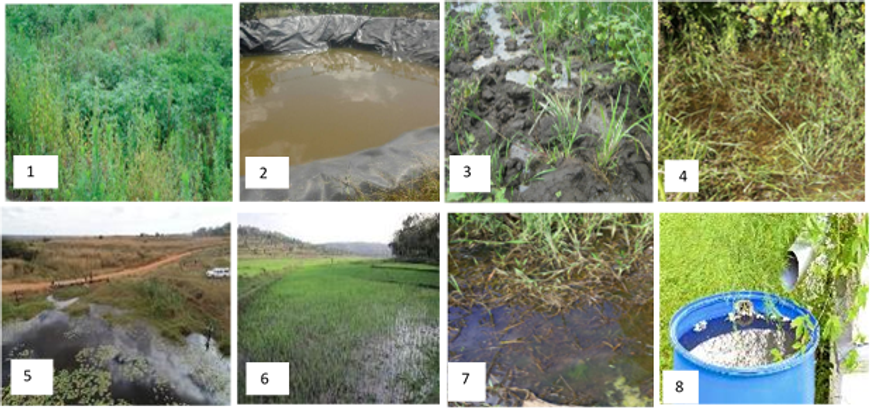Malaria control intervention
In Rwanda the following malaria control interventions are implemented:
Early diagnosis and treatment
Artemisinin-based Combination Therapy (ACTs) is used as the first line therapy in all health facilities in the country. Universal parasitological diagnosis with microscopy is used in health facilities and Rapid Diagnostic Tests at community level.
Malaria treatment at the community level
Free ACT and RDTs are implemented in the country since 2004. Malaria treatment for adults as well as free treatment for population in lower economic status (Ubudehe 1&2) is implemented at community level.
Long-Lasting Insecticidal Nets (LLINs)
The mainstay of vector control in Rwanda is universal coverage with long-lasting insecticidal nets (LLINs) targeting the entire population in the country.
Indoor Residual Spraying (IRS)
IRS is initiated in high malaria burden districts. Currently the high burden districts include: Bugesera, Gatsibo, Gisagara, Huye, Kamonyi, Kirehe, Ngoma, Nyagatare, Nyanza, Rusizi and Rwamagana (PMI, 2018). Currently carbamate insecticide class is used for IRS in response to pyrethroid resistance (MOH, 2017).
Social Behavior Change Communication (SBCC)
Several SBCC interventions have been implemented in Rwanda using different communication channels such as mass media, community outreach, community mobilization in order to sensitize the population on malaria prevention and treatment. However, these interventions reduced overtime due to declining funds.
Surveillance, Monitoring and Evaluation, Operational Research (SMEOR)
SME is based on keeping informed the malaria program about the achievement of key malaria indicators such as malaria cases reported by health facilities through Health management Information systems and Système Information Sanitaire des COMmunauté (SISCOM) through which community health workers (CHWs) report the use of the malaria commodities received from the national Malaria Control Programme.
Malaria interventions for key vulnerable groups
- Early diagnosis and treatment of malaria for refugees in the refugee camps is also implemented in collaboration between the government of Rwanda and UNHCR.
- IRS has been planned to be implemented for some districts.
Other methods
Physical control methods to treat natural breeding sites
- Closing windows earlier before 4pm prevent entry of mosquitoes in the house. After dark, keep windows and doors closed or block out the light with curtains.
- Prevent or remove breeding sites.
Prevent breeding:
- Avoid water logging
- Ensure drains are kept clear and running/ drain stagnant water
- Cover water butts with a lid.
- Do not leave standing water
- Cut or clear bushes around the house - Gardening or clearing bushes around the house
- Prevent biting
- Wear long sleeves, trousers, footwear and reduce exposed skin.
- Use mosquito repellent sprays on exposed skin.
- Use mosquito repelling products or candles when sitting

